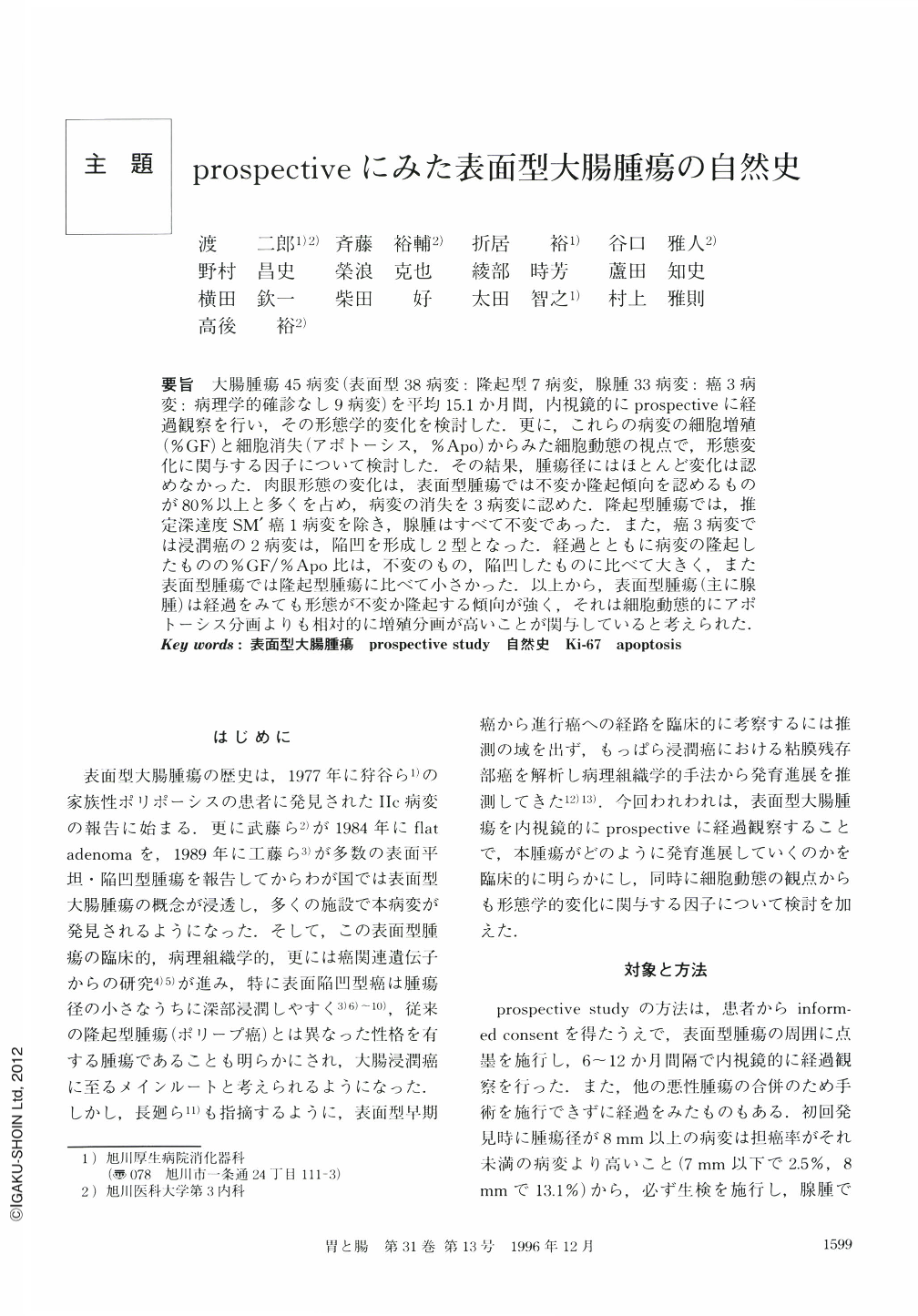Japanese
English
- 有料閲覧
- Abstract 文献概要
- 1ページ目 Look Inside
要旨 大腸腫瘍45病変(表面型38病変:隆起型7病変,腺腫33病変:癌3病変:病理学的確診なし9病変)を平均15.1か月間,内視鏡的にprospectiveに経過観察を行い,その形態学的変化を検討した.更に,これらの病変の細胞増殖(%GF)と細胞消失(アポトーシス,%Apo)からみた細胞動態の視点で,形態変化に関与する因子について検討した.その結果,腫瘍径にはほとんど変化は認めなかった.肉眼形態の変化は,表面型腫瘍では不変か隆起傾向を認めるものが80%以上と多くを占め,病変の消失を3病変に認めた.隆起型腫瘍では,推定深達度SM'癌1病変を除き,腺腫はすべて不変であった.また,癌3病変では浸潤癌の2病変は,陥凹を形成し2型となった.経過とともに病変の隆起したものの%GF/%Apo比は,不変のもの,陥凹したものに比べて大きく,また表面型腫瘍では隆起型腫瘍に比べて小さかった.以上から,表面型腫瘍(主に腺腫)は経過をみても形態が不変か隆起する傾向が強く,それは細胞動態的にアポトーシス分画よりも相対的に増殖分画が高いことが関与していると考えられた.
Superficial type neoplasm is a relatively new category of colorectal tumor. Compared with sessile tumor, it has been speculated that this type of adenoma easily evolves into carcinoma and invades the submucosal layer early even in a small size. The direct evidence of this speculation has, however, not been presented so far. Furthermore, no data has been offered on the mode of their growth, i.e. whether or not the superficial type neoplasms develop into invasive cancer in keeping with their macroscopic shapes. We followed up 45 colorectal neoplasms (38 superficial and seven sessile types, 33 adenomas, three carcinomas and nine tumors of undefinite histology) by colonoscopic observation and biopsy for 15.1 (1~42) months. A cell kinetic data was also analyzed by detecting proliferating cell growth fraction (%GF) and cell loss fraction by apoptosis (%Apo). Tumor size did not change during the follow-up period. Of 38 superficial type neoplasms, follow-up colonoscopic examination showed unchanged figure in 18, elevated growth in 14, depressed growth in three, and disappearance in three. One of seven sessile tumors developed depressed growth, but the others were not changed. Sessile tumors had a higher %GF/%Apo ratio than superficial type neoplasms. Superficial type tumors with elevated growth during the follow-up period also had a higher %GF/%Apo ratio than those with depressed growth or unchanged figure. These results suggest that the superficial type adenomas tend to elevate during their growth, which are due to relatively higher proliferation against apoptotic cell loss.

Copyright © 1996, Igaku-Shoin Ltd. All rights reserved.


